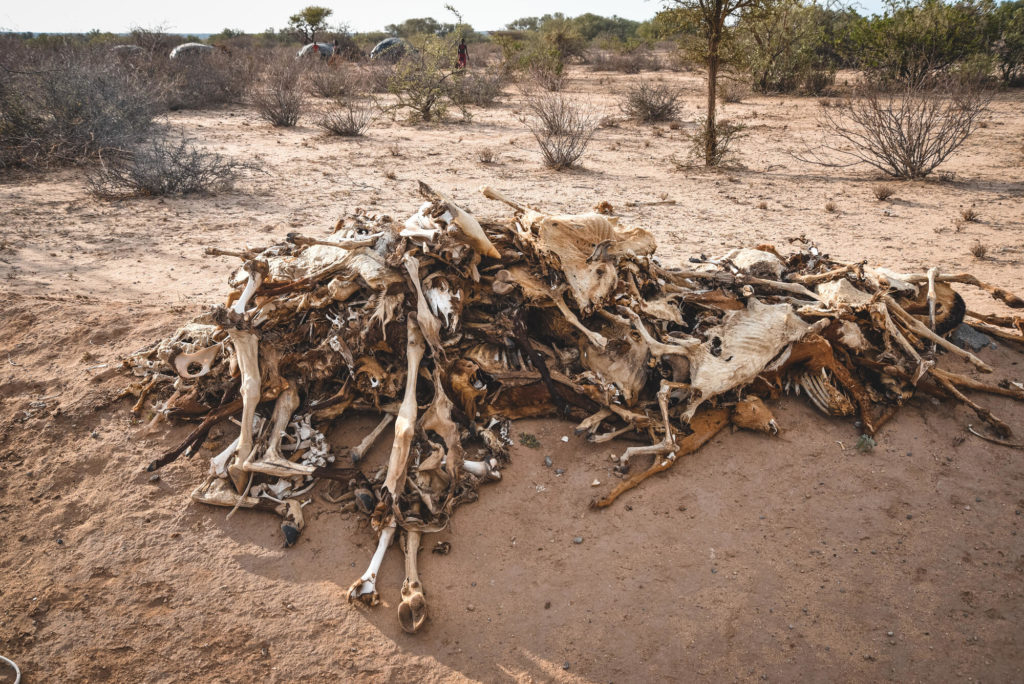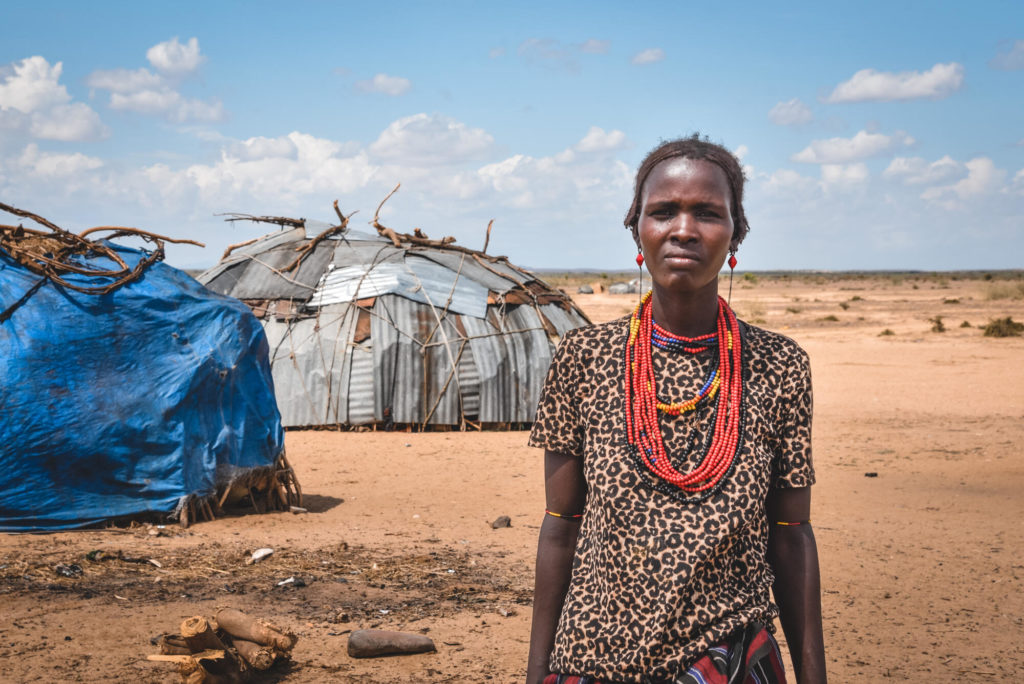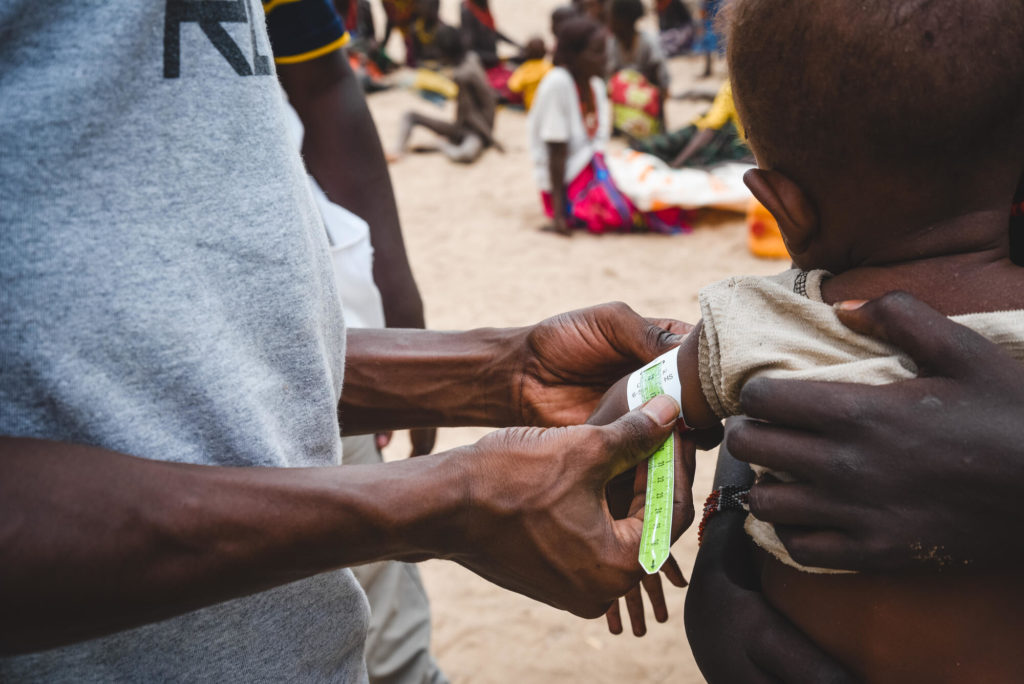In Northeast Kenya, an ongoing drought is raging on following three consecutive seasons of failed rains, making an already dire food insecurity situation worse. Marsabit County is now reporting high or above-usual rates of acute malnutrition. If medical and humanitarian assistance provided by the national and county governments does not improve, the crisis may continue to September 2022.

60 per cent of livestock have been lost
In the area of Illeret, the number of people with malnutrition has been increasing in households because the health conditions of their livestock are deteriorating, resulting in less milk.
Telite Saani, a 26-year-old mother of six from Lomadang village, has twin boys who are still breastfeeding and currently in the Médecins Sans Frontières (MSF) supported nutrition program with moderate and severe acute malnutrition. Her breastmilk has been insufficient because she barely eats.
“We had 20 cattle and sheep too,” says Telite. “But they have all died. We collected the carcasses near the road to be burnt.”
With less pasture and water resources, people now must trek long distances to find grazing areas for livestock and for domestic use. Households barely have a meal per day.
“I now collect firewood for sale near Ethiopia,” says Telite. “I also fetch water from the well and sell it. If I get money, I buy flour for porridge, but sometimes when I do not sell anything, we just sleep hungry.”
The situation has worsened because of reduced access to food in the market and decline in trade. The price of groceries has shot up by 25 to 50 per cent. The lack of food has led to families sharing the nutrition supplements given to malnourished children.

“We had 20 cattle and sheep too, but they have all died. We collected the carcasses near the road to be burnt.”
TELITE SAANI
A worsening malnutrition crisis
In February 2022, MSF carried out an assessment in five sub-counties of Marsabit. North Horr sub-county, specifically in Illeret, has the worst food insecurity and the highest number of malnourished children. A mass screening done by UNICEF in Marsabit, also in February, showed a critical global acute malnutrition rate of 23 per cent.
Eleven children who were patients in the malnourishment programme died between mid-February and mid-March.
The Ministry of Health and other organisations conducted outreach activities to support the integrated management of acute malnutrition in some sub counties. These activities could not be sustained, reducing the identification of malnourished children and follow-ups in the communities.
“More funding and coordination are needed to be able to meet people’s critical needs and address malnutrition,” says Edi Atte, MSF’s country director in Kenya. “Mobile outreach needs to offer regular nutrition assessment and support. In the past, logistical and human resource challenges meant outreach clinics were held only once or twice a month, undoing the treatment progress of malnourished children and follow-ups.”
MSF’s response
MSF has been working with the Ministry of Health and other organisations to strengthen the medical component of nutrition management activities in Illeret. MSF teams support in the screening, diagnosis and management of acute malnourished children. Our approach of active case finding and surveillance has increased the number of children who have access to this care.
“Since we started our intervention in March there has been an increase in admissions of children with acute malnutrition and children not responding to treatment,” says Edi Atte. “We enhanced referrals to the stabilisation centre in Illeret. This has saved lives.”
MSF has also assisted in adapting the inpatient department of Illeret Health Centre to a 10-bed inpatient therapeutic feeding centre. Mothers in the feeding centre also receive three meals a day to enhance their lactation.

It’s now raining in the region and food distribution is happening. However, there is still a critical need for consistent, quality and adequate food distribution for households. Long-term solutions must also be found to help people access water, an issue which continues to impact children’s health.
“MSF urgently calls for sustained food distribution to all households in Illeret and increased human resources for Illeret Health Centre,” says Edi Atte.











